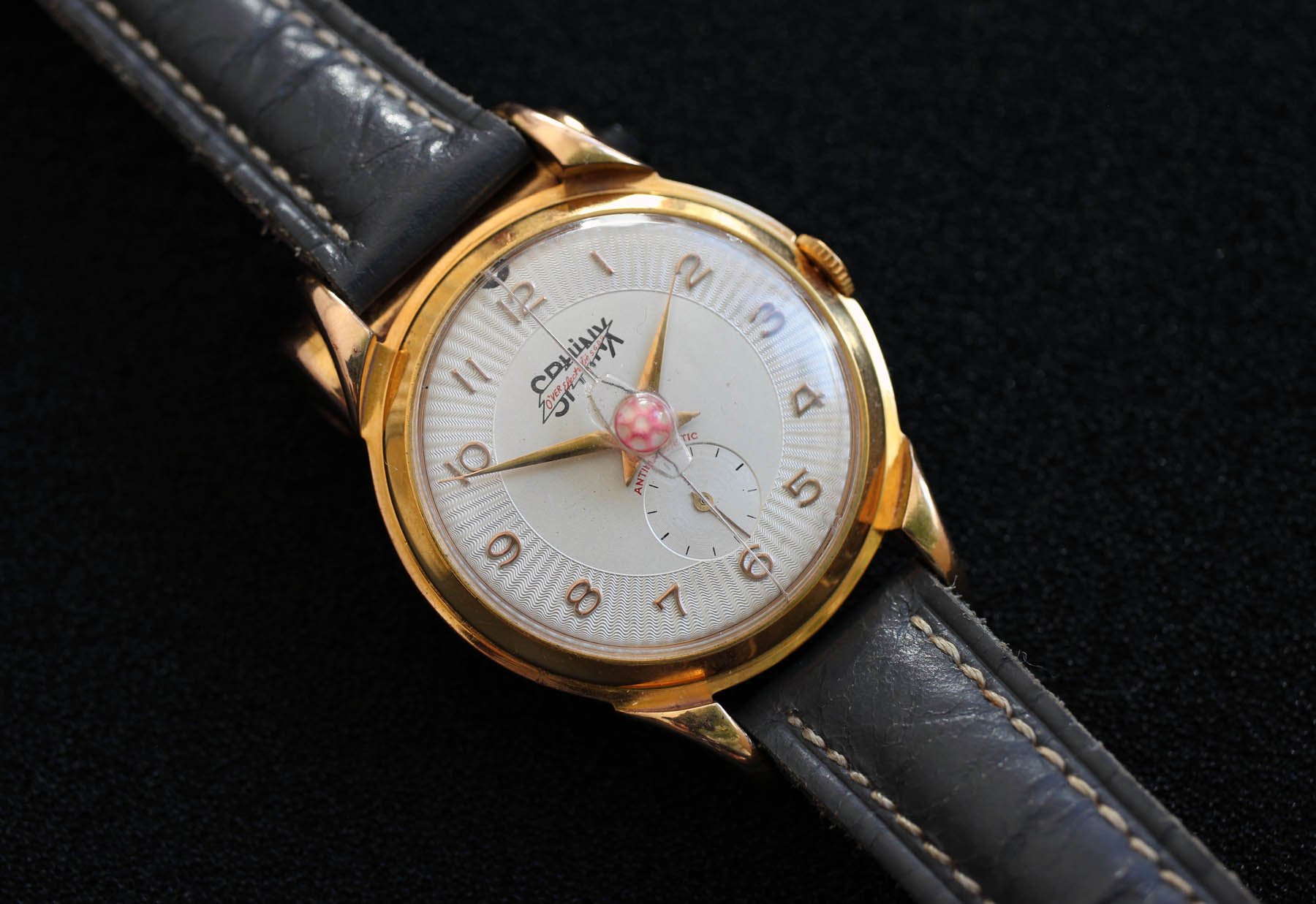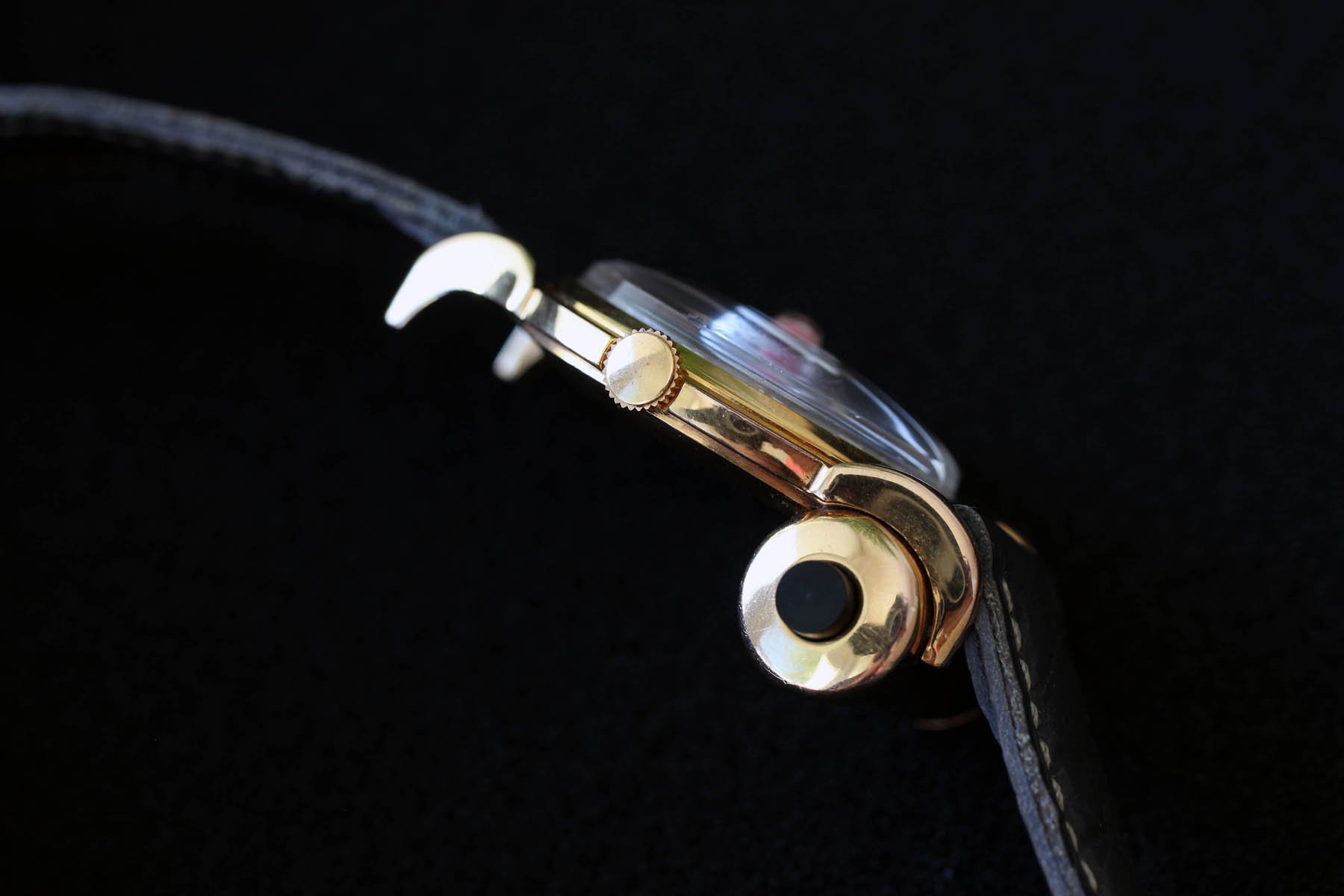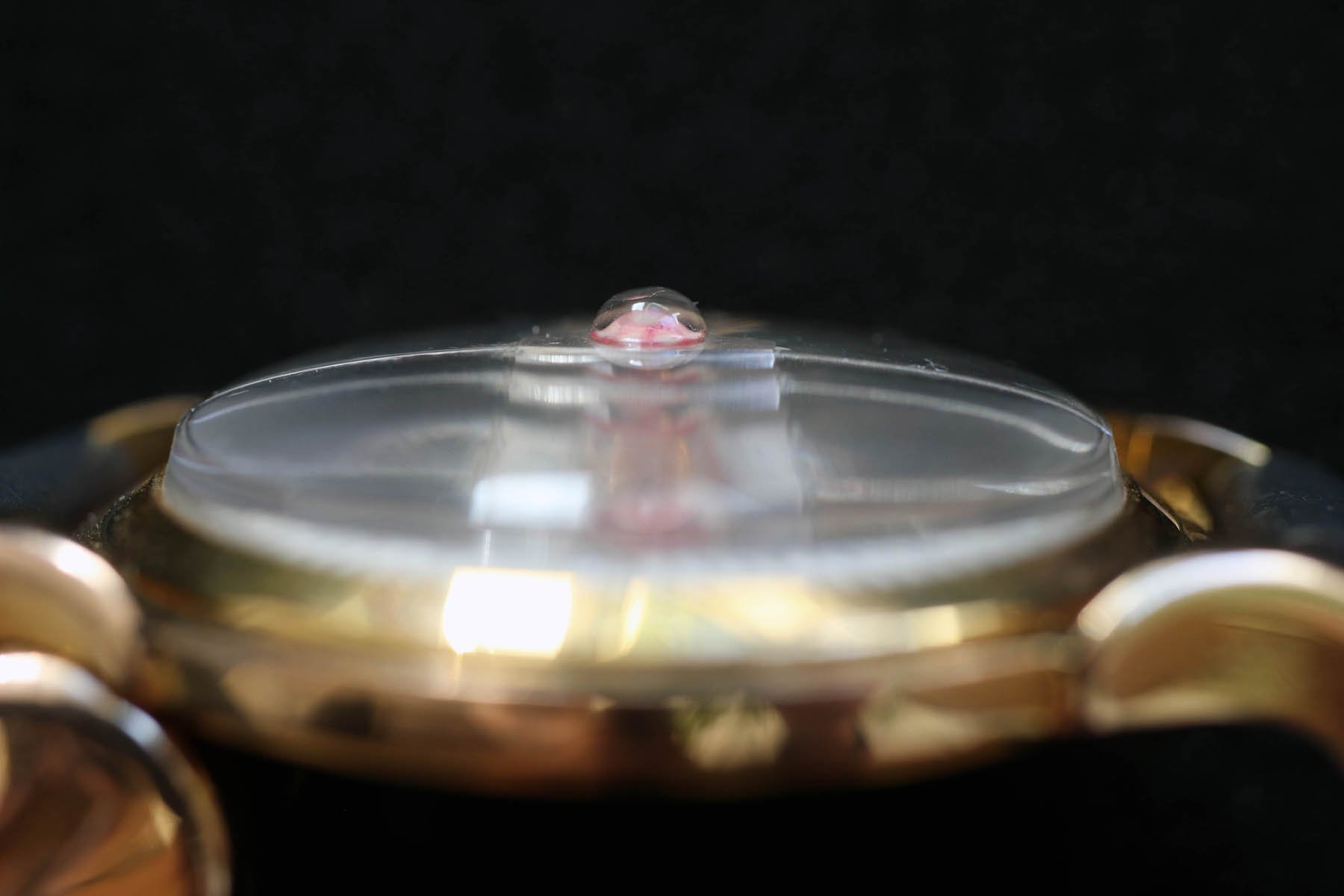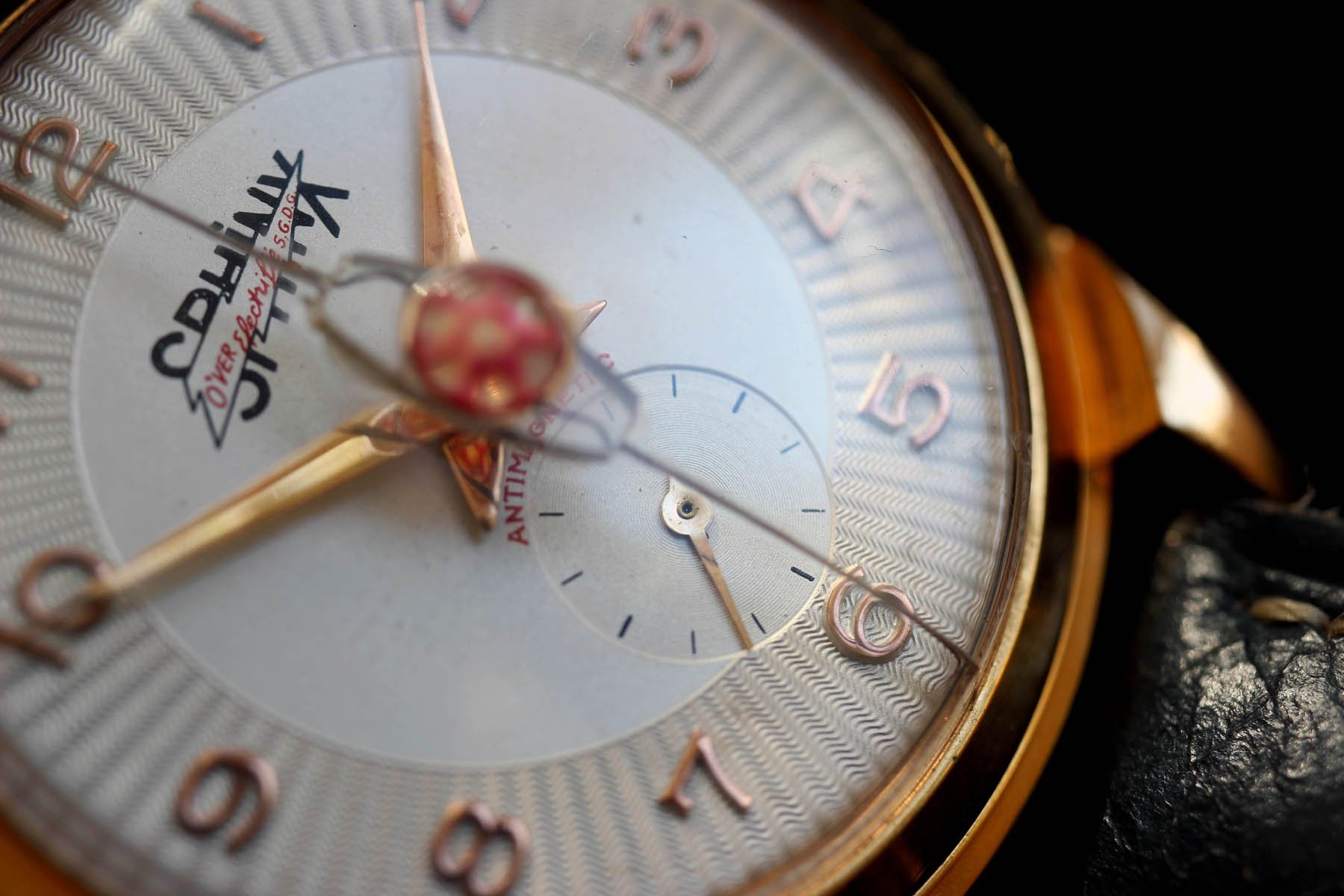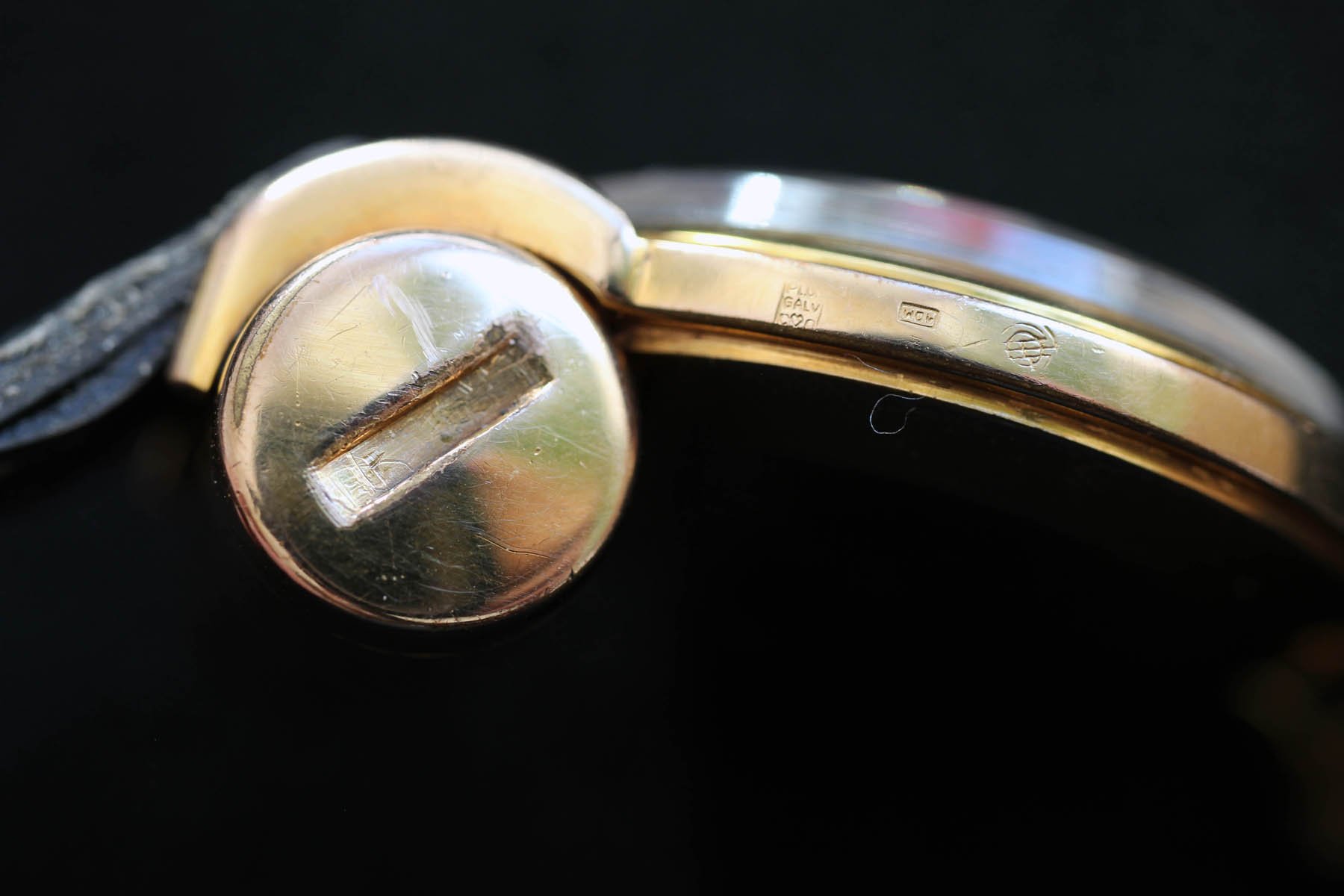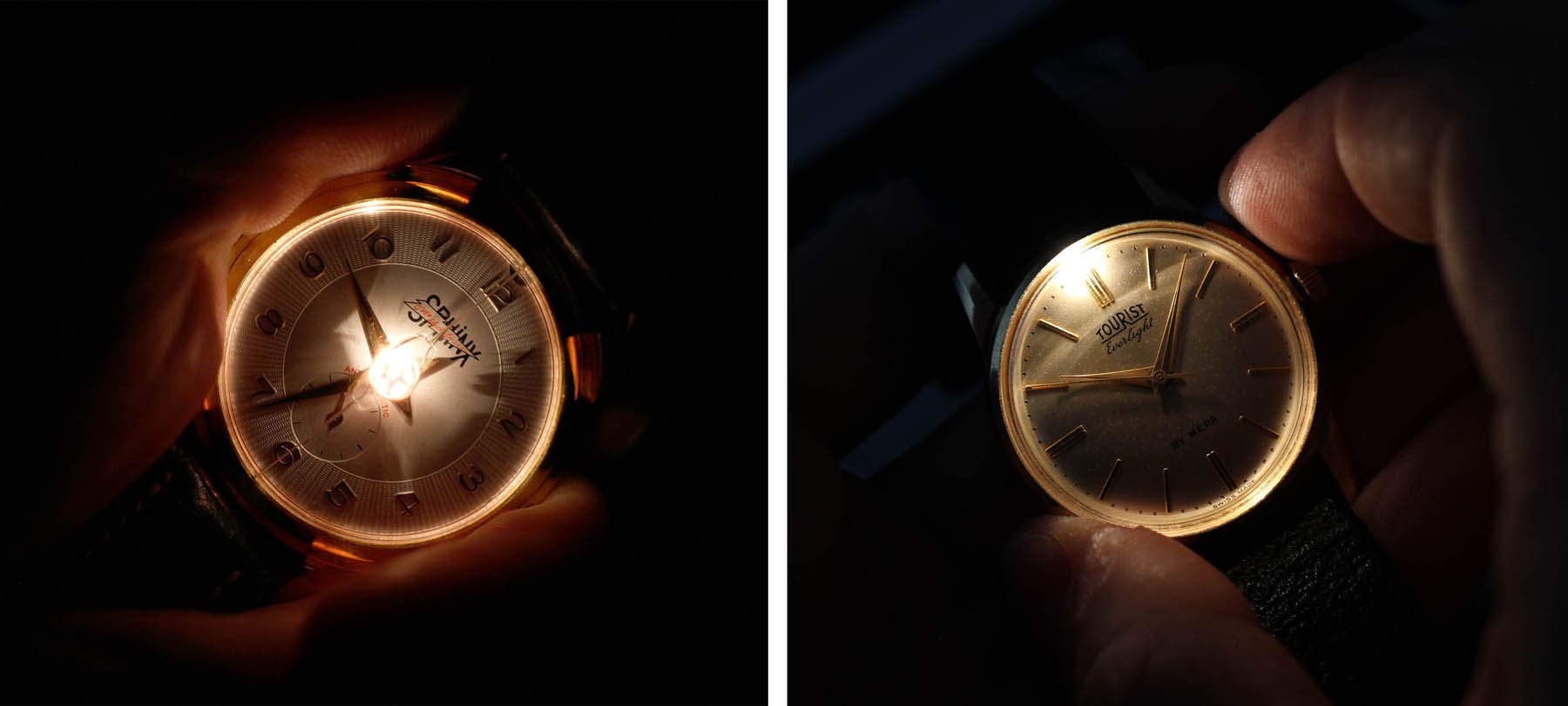#TBT: Sphinx O’ver Electrifié — Anyone For Mushrooms?
This watch is not easy to process. It is even harder to describe. The Sphinx O’ver Electrifié is an incredibly rare, battery-illuminated, hand-wound piece. Get ready for a shocking mix of traditional elegance and crazy originality in today’s #TBT. Wearable? Tell us what you think.
I bet you remember my love affair last year that was so elaborate to explain that I hardly managed to fit it into two lengthy, but I hope satisfactory 7-minute reads. The Tourist Everlight was a genius watch, but despite its originality, it never reached a reputation big enough to get on collectors’ lists. Quite the opposite. Due to issues with batteries leaking, large chunks of the sold production were taken back due to warranty claims. The Tourist company closed down operations in 1963, just six years after the Everlight was introduced to the market.
Sphinx O’ver Electrifié
If you try hard, you will find brands such as Paul Garnier, Sparewa, Kinder, Dixton, Giroxa, and Aureus Extra printed with the Everlight name on the dial. This suggests that all of the models use the same patent, movement, and additional tech by Adolf Allemann, the founder of Tourist. So far, the only known close competitor in battery-illuminated mechanical watches was Ernest Borel, introducing his own Flash a year after the Everlight.
Judging by the design elements, though, we have another early light contender.
In the mid-1960s, Orient introduced its version and that just about wraps it up. It was only last year that I bumped into this obscure watch (which I am struggling to date precisely). Judging by the design elements, though, we have another early light contender.
All different Sphinx
Where to start. While all the previously mentioned models have pretty generic designs, the Sphinx is completely off the wall. Have you ever encountered “spider” lugs before? If not, prepare yourself for a baptism of fire. The lugs on the Sphinx are so high on top and so long at the bottom, that if you can just about crawl under the Sphinx when you put it on the table.
…surprisingly easy to read.
The reason is simple. Under the 12 o’clock lugs, there is a huge cylindrical container housing the battery. No matter what angle you are looking at the watch from, it’s always visible. As entirely bizarre to look at as this case is in profile, the battery capsule does at least incline the watch face towards the wearer’s gaze, making it surprisingly easy to read.
Turning on the lights
At the bottom of the battery container, there is a wide and deep notch. This is so you can easily unscrew it and reach the battery. I guess back in the day you had to change it often, so comfortable access was a bonus. On the opposite side, there is a black plastic button. It is about the same size as a chronograph pusher. With a simple click of this button, the Spinx comes to life in the dark.
With its bold eccentricity, the Sphinx is the Dennis Rodman of the watch world.
While the Tourist Everlight had a bulb installed at the 12 o’clock position (at the very edge of the dial), the Sphinx decided on a more direct approach. Bang slap in the middle of the dial is an enormous, mushroom-shaped bulb. If Everlight was going for demure, Sphinx decided to go for demented instead…
With its bold eccentricity, the Sphinx is the Dennis Rodman of the watch world. If you run your thumb over the mushroom-shaped bulb, you find it to be surprisingly convex. The typical cyclops eye is boring in comparison to this element that feels like a small nipple.
It was given a prominent position so it might case light evenly over the whole dial. Compared to the Everlight, performance is poor. But the Sphinx is an eye-catcher. It never fails to entertain when you need to check the time in the dark.
How it works
The wiring that runs from the bulb seems to cut the crystal in half. That does bother me a bit. At the same time, however, it looks cool and high-tech. Any time I see it, it reminds me of another crazy watch, the radio-controlled Citizen 7400 Multizone which has a coil integrated into the crystal. The photos I received from the seller clearly show how the wiring runs from power source to bulb.
Opening the Sphinx
Readers with sharp eyes might have noticed that there is no real case-back. The Sphinx has no case back. You will hear of these cases being referred to as both monocoque and monobloc cases (with equal assistance that both terms are the correct one). It seems monobloc is more common in North America and monocoque finds more favor across the Atlantic, probably due to its French origins.
Strangely, though, there is a subtle difference in meaning. The term monobloc is generally used to describe anything that consists of primarily one component (such as a monobloc engine). It has been hijacked by the watch community to describe these simple case styles, probably because it “feels” a little more accurate than the word monocoque, which can’t help but conjure thoughts of movements cocks in the mind of any have-a-go urologist.
The word monocoque is a vehicular term…
The word monocoque is a vehicular term describing an aircraft or vehicle in which the chassis is integral with the body. Whether that is a better term or not is up for debate, but I feel much more comfortable using the term monocoque when the monobloc case in question plays an additional role in the functionality of the watch (as the chassis does in a vehicle).
Here, for example, the case not only eschews a case back but also adds a battery unit. It is much more than a simple housing for the movement. It is the same, even, for a standard Swatch original, in which the solid plastic case is actually used in place of a movement plate.
The movement
If you want to get to the movement, you have to demount the frontal ring around the crystal. With the help of Google and markings on the movement, I was able to identify the caliber. Inside the Spinx is a Lorsa 237B. It has 15 jewels, a nickel finish, and despite the fact that it, “may seem basic and industrial in finishing, it was well made and kept accurate time.” Or so says the Internet…
Classy dial
Until this stage, every detail was unprecedented and completely novel. That’s why looking at the old school dial left me speechless. The Sphinx has an absolutely amazing double-sunk silver dial. The hour track sitting at the highest level has a gorgeous guilloche decoration and applied gold indexes. The marking “B“ behind the Lorsa 237 caliber denotes small seconds. I like the detail of the sub-register running into the hour track slightly. Unlumed Dauphine hands seem as boring as a Monday morning in comparison to the surrounding carnival. But they fit the indexes and the case.
The gigantic Sphinx branding looks like it was stolen from the next Marvel hero movie poster. I get the branding idea — it’s witty and amusing — but I’m not sure the guy that drew it saw the rest of the watch…
The Sphinx is one of the few watches that I just don’t understand. I feel a bit lost and I am not sure what the design wants to achieve. I promise I’ll keep thinking. Maybe that’s what makes it so intriguing…
Shotgun notes
A thin gold crown completely matches the case and I don’t doubt its originality. Three plating symbols stamped in a random fashion on the left side of the case makes me laugh whenever the catch my eye. The case is marked Bte. S.G.D.G. at the bottom. I hope I never break the crystal because I am afraid sourcing a new one would take three lifetimes. The battery barrel under the lugs makes the Sphinx sit on the wrist in a funny way. Almost like a driver’s watch (not divers‘). You don’t need to rotate your wrist to read the time.
The former owner believes that the grey leather strap and gold plated buckle are both original. I don’t think so, as when I strap it on, the buckle sits a bit off. But I agree that the strap is from the same era.
…music to my ears.
Speaking about the former owner, that‘s also a great story. Florian lives in Romania and he comes from a family that has collected watches for four generations. After the purchase, I hung out over the phone with him a couple of times. His stories were music to my ears.
Last thoughts
All the weirdos in my collection are stable horses in my watch rotation carrousel. I have to admit the Sphinx is one of the few watches that hasn’t gotten there yet. But as I read once, a true collector also buys watches he won’t wear often. I am happy that I made it a part of my collection and that I have the opportunity to show it to the world. Let the Sphinx remind us all that the vintage horology trenches are deep and always have a new surprise in store for us. Happy hunting.
Follow me on Instagram.

